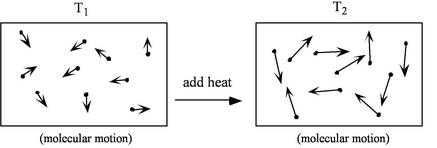
Breaking News
 Mirrored concrete for cheap solar energy
Mirrored concrete for cheap solar energy
 All Government Is Dictatorial Because All Government Is Totalitarian
All Government Is Dictatorial Because All Government Is Totalitarian
 Putin Says He's Ready for Peace
Putin Says He's Ready for Peace
 Medicaid Fraud in Minnesota at least $9 Billion Since 2018
Medicaid Fraud in Minnesota at least $9 Billion Since 2018
Top Tech News
 Perfect Aircrete, Kitchen Ingredients.
Perfect Aircrete, Kitchen Ingredients.
 Futuristic pixel-raising display lets you feel what's onscreen
Futuristic pixel-raising display lets you feel what's onscreen
 Cutting-Edge Facility Generates Pure Water and Hydrogen Fuel from Seawater for Mere Pennies
Cutting-Edge Facility Generates Pure Water and Hydrogen Fuel from Seawater for Mere Pennies
 This tiny dev board is packed with features for ambitious makers
This tiny dev board is packed with features for ambitious makers
 Scientists Discover Gel to Regrow Tooth Enamel
Scientists Discover Gel to Regrow Tooth Enamel
 Vitamin C and Dandelion Root Killing Cancer Cells -- as Former CDC Director Calls for COVID-19...
Vitamin C and Dandelion Root Killing Cancer Cells -- as Former CDC Director Calls for COVID-19...
 Galactic Brain: US firm plans space-based data centers, power grid to challenge China
Galactic Brain: US firm plans space-based data centers, power grid to challenge China
 A microbial cleanup for glyphosate just earned a patent. Here's why that matters
A microbial cleanup for glyphosate just earned a patent. Here's why that matters
 Japan Breaks Internet Speed Record with 5 Million Times Faster Data Transfer
Japan Breaks Internet Speed Record with 5 Million Times Faster Data Transfer
Energy Harvesting Breakthrough

In this work, researchers demonstrate that the energy of liquid molecular thermal motion can be converted into electrical energy by a novel harvesting device, the molecular thermal motion harvester (MTMH). The MTMH was made by using two ZnO-based nano-arrays and one of which was gold coated to form a Schottky junction. The assembled electrodes were immersed in different liquid phase environments. The device was demonstrated to convert the molecule thermal energy of the liquid into a continuous and stable electric current. The output voltage and current can achieve 2.28 mV and 2.47 nA, respectively, and increase with the liquid temperatures. This strategy opens new insights into the development of mini- and micro-scale energy sources, and it can be expected the MTMH will have broad applications in the future.
In the era of the Internet of Things (IoT) and 5G, energy demands are decentralized, mobile, and ubiquitous. Some mini- and micro-scale energy sources, such as airflow, human movement blood flow, ultrasound, etc., have already been explored and converted into electricity by various nano-energy generator technologies based on different schemes/mechanisms. Most of these conversions are based on mechanical energy.
Molecular thermal motion is a special kind of dynamic motion that is essentially different from ordinary mechanical motion. It is a component of the internal energy of the physical system, which means that the molecules of all substances are in constant and random movement above absolute zero temperature. Brownian motion of particles is one example that is caused by the molecule thermal motion of the surrounding liquid or gaseous molecules. Molecule thermal motion contains an enormous amount of energy, taking an ideal gas as an example, the average kinetic energy of thermal motion per mole of gas molecules at room temperature (27 °C) is 3.7 kiloJoules. If this form of energy could be utilized from the huge amounts of liquids and gases on the planet effectively, this would provide a new source of energy on an enormous scale.

 Advanced Propulsion Resources Part 1 of 2
Advanced Propulsion Resources Part 1 of 2

